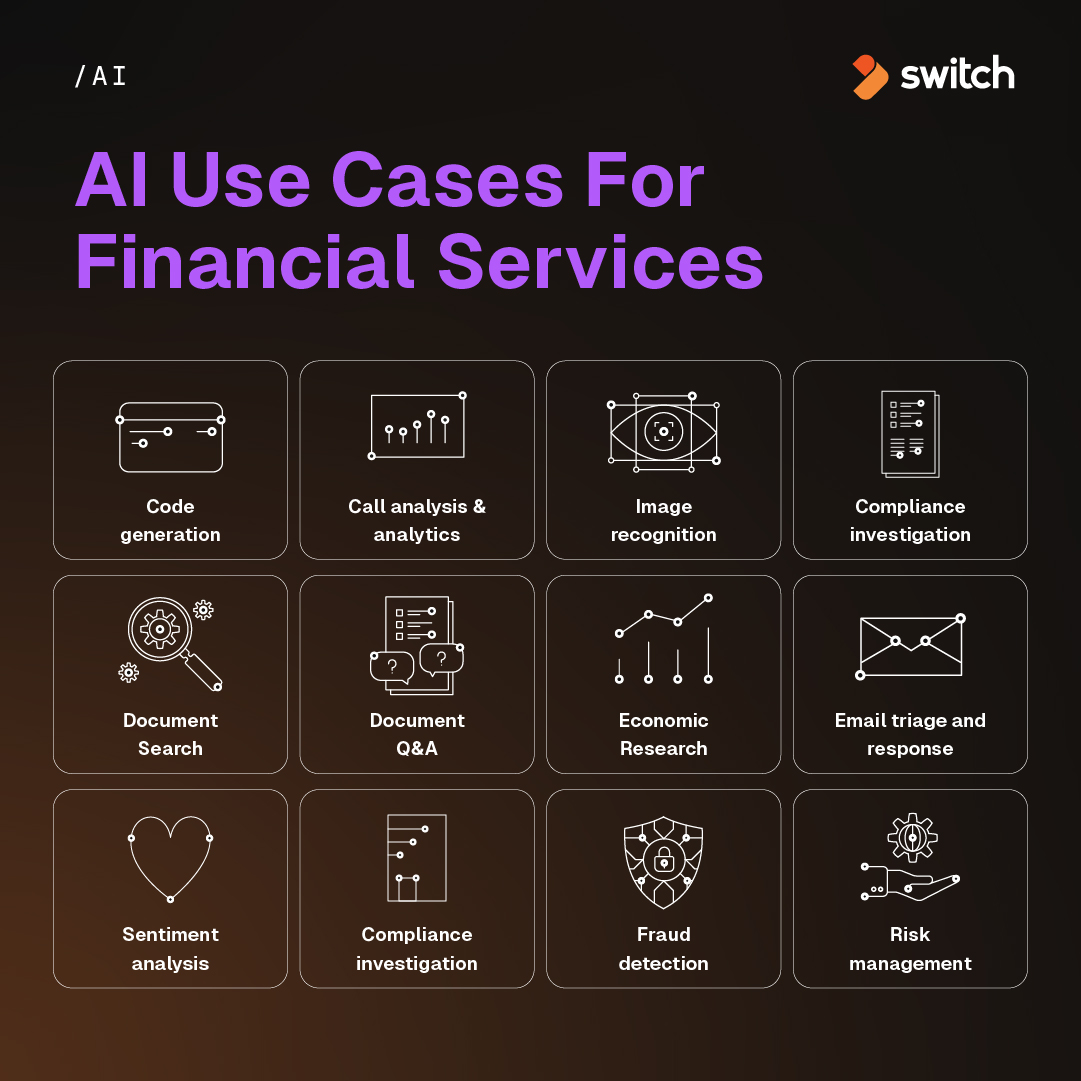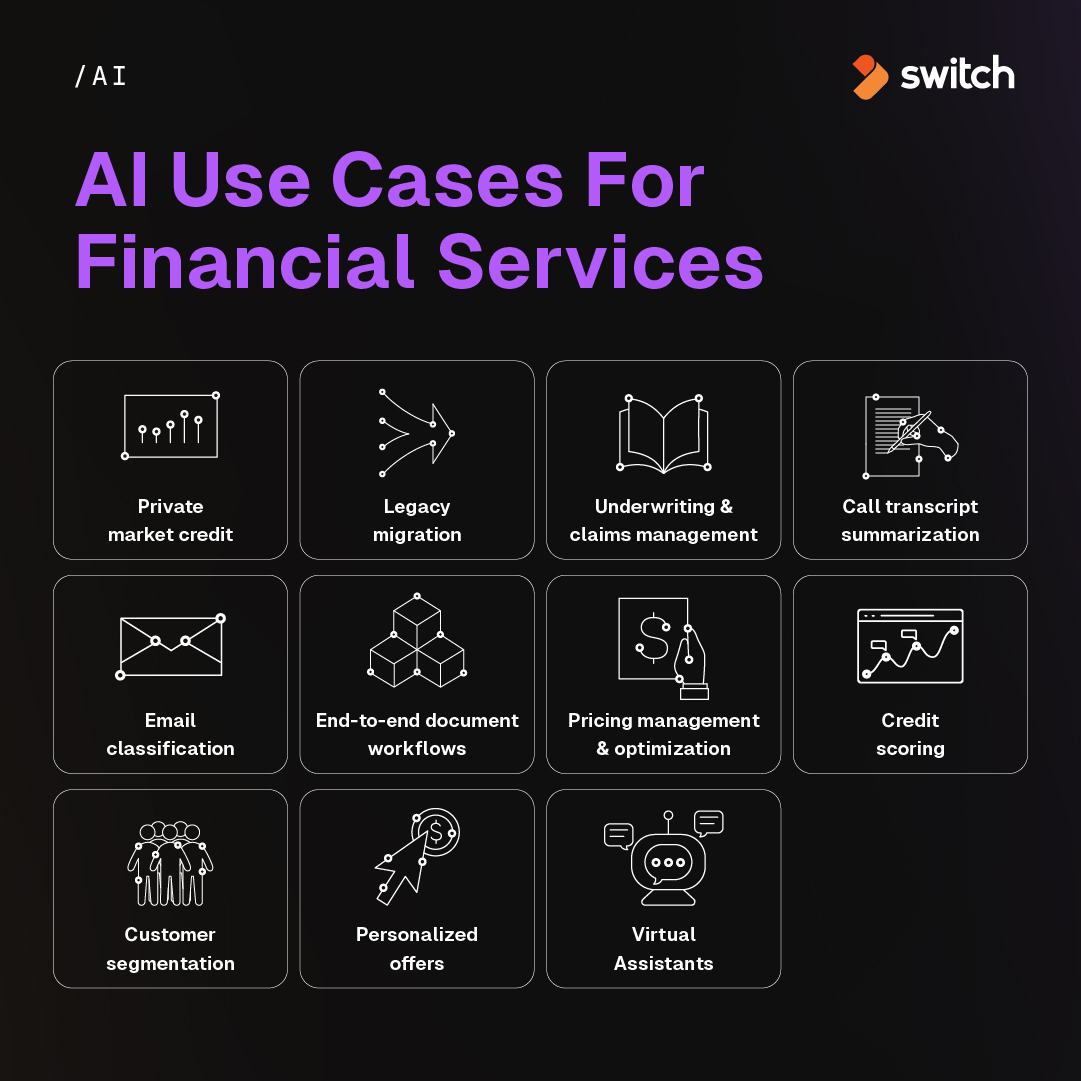Real-World Use Cases of GenAI and Data in Financial Services
.jpg)
For executives in financial institutions, 2025 is not about exploring GenAI—it’s about implementing it responsibly and profitably. The technology is rapidly evolving from proof of concept to production-grade systems that drive real outcomes in fraud detection, compliance, and personalized customer service.
Below are some of the most relevant use cases we’re seeing across the industry—where GenAI and robust data architectures come together to deliver measurable value.


1. Smarter fraud prevention and investigation
Traditional fraud systems rely on static rules and manual reviews. GenAI, combined with graph-based data models, enables a more adaptive approach. By analyzing relationships between transactions, devices, and identities, financial institutions can spot previously hidden fraud rings and act in real time.
When integrated with orchestration tools (like AWS Bedrock AgentCore), GenAI can even execute playbooks: flagging suspicious transactions, freezing accounts, or generating detailed fraud reports for investigators—with complete traceability.
This approach is part of a broader trend in the industry, where GenAI for fraud detection and response is transforming how financial institutions protect their ecosystems. By combining generative models with contextual reasoning, these systems don’t just identify anomalies—they understand intent, allowing faster reaction and more accurate investigation outcomes.
2. Enhanced credit and risk scoring
Credit decisions depend on more than balance sheets. GenAI models trained on multi-source data—bank statements, transaction behavior, and even qualitative inputs from customer interactions—can predict risk more dynamically. This not only expands access to credit for underbanked populations but also reduces default rates by recognizing early behavioral patterns that signal financial distress.
For example, some institutions are deploying AI copilots that summarize an applicant’s financial health, highlight anomalies, and explain recommendations in natural language, empowering analysts to make faster, fairer decisions.
3. Compliance and regulatory automation
Financial compliance remains one of the most resource-intensive areas in the industry. GenAI’s ability to interpret and summarize vast regulatory texts—cross-referencing them with internal policies and transactions—dramatically reduces time spent on audits and reporting.
A compliance analyst can now query an AI assistant with questions like “How does this transaction align with our KYC policy for cross-border payments?” and receive a citation-backed explanation. This makes oversight not only faster but also more consistent across teams.
4. Customer experience redefined
Financial consumers today expect real-time, personalized, and context-aware interactions. GenAI enables digital assistants that go far beyond scripted chatbots—providing meaningful, human-like engagement. Imagine a virtual advisor that synthesizes your past spending habits, savings goals, and investment profile to generate tailored financial guidance.
When powered by secure data integration and grounded models, these systems can scale personalized advice to millions while maintaining trust and privacy.
5. Operational intelligence and forecasting
Beyond customer-facing use cases, GenAI also powers smarter internal operations. Banks use AI to generate daily summaries of portfolio performance, forecast liquidity risks, and even simulate macroeconomic stress scenarios. Combined with high-quality data pipelines, this supports more proactive decision-making across departments.
Looking ahead
The common thread across all these applications is data readiness. GenAI performs best when it’s built on clean, connected, and governed data. Institutions that invest early in data quality, lineage, and security will see faster time to value and more trustworthy results.
At Switch Software, we help financial organizations bridge the gap between vision and execution—designing data foundations, orchestrating GenAI workflows, and implementing data architectures that meet the industry’s highest standards of security and compliance.
The goal is not just to adopt GenAI tools, but to create measurable business outcomes: reduced fraud, better risk visibility, happier customers, and leaner operations.
GenAI’s potential in financial services is vast, but its success depends on one principle: meaningful intelligence starts with meaningful data.